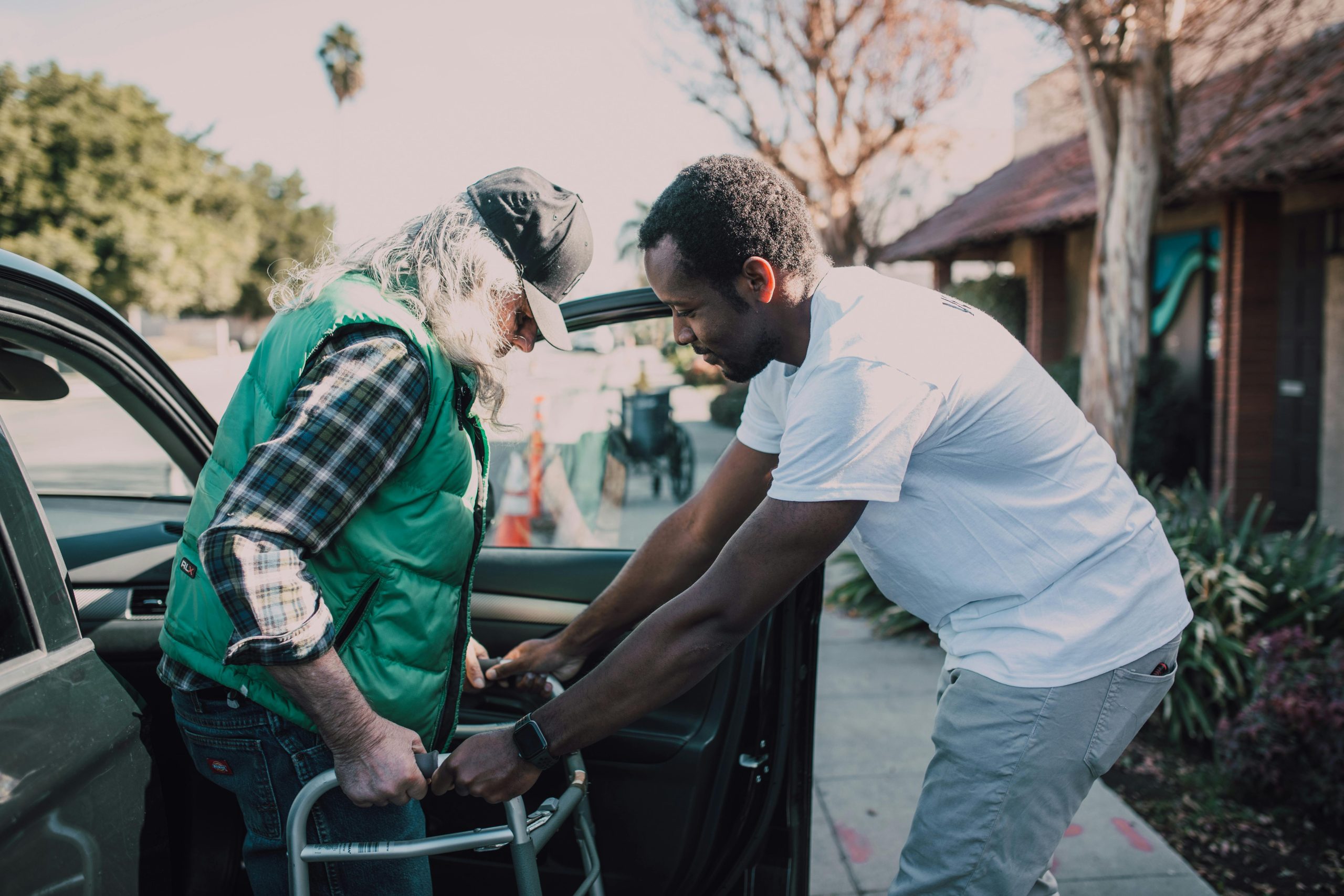A Brief Overview of the Benefits of Volunteering

Volunteering is a fundamental component of community spirit, utilizing deeds of kindness and commitment to weave the fabric of communal cohesion. Giving back isn’t the only thing it offers; it’s a route to personal development with a special combination of educational opportunities that develop empathy, leadership, and collaboration. People who volunteer their time and talents not only spark change in their communities but also set out on a path of personal growth and discovery. This twofold benefit—fostering the community and the individual—sets a strong example for the next generation.
- In addition to supporting children’s personal development, volunteering fosters a sense of community and responsibility in them, establishing the foundation for a caring and engaged society in the future.
Understanding the Reasons Behind Children’s Reluctance to Volunteer


Children’s hesitation to volunteer may appear perplexing at first. But frequent causes like boredom, schedule conflicts, and apprehension about the future provide light on their hesitancy. A child’s environment is very different from ours in that it is full with social activities, hobbies, and schoolwork all competing for their time and attention. Taking on more responsibility might be intimidating, particularly if volunteering isn’t something you’ve done before or doesn’t seem like fun.
- Children’s attitudes toward volunteering are greatly influenced by their peers. Children are likely to take the same attitude toward volunteering if their friends do.
- It’s critical to dispel common misconceptions about volunteering. A lot of kids think volunteering is hard, uninteresting, or unimportant in their life.
We can pique curiosity and excitement by dispelling these fallacies and emphasizing the variety of fascinating opportunities that are accessible. Being a volunteer may be an adventure that presents opportunities to socialize, acquire new abilities, and even have fun. It’s about turning volunteering from a chore into a fulfilling and enlightening experience by demonstrating to kids that their efforts can actually make a difference.
Recognizing these obstacles is the first step in helping kids accept volunteer work. Through addressing their worries, dispelling their myths, and emphasizing the advantages, we can encourage a new wave of volunteers who are ready to give back to their communities and develop personally in the process.
Modeling Your Leadership: The Effectiveness of Role Modeling

It is impossible to overestimate the impact that parental behavior has on kids’ attitudes and behavior. Youngsters are astute observers who frequently emulate their parents’ behavior and morals. In addition to helping the community, parents who volunteer regularly teach their kids the value of giving back to the community. The next generation’s perspective on community involvement will be shaped by this quiet education in empathy and responsibility.
- Talking to kids about your own volunteer experiences has an equal impact. Providing a story about the difficulties encountered, the abilities gained, and the satisfaction of changing the world might pique young people’s curiosity.
- This is furthered when families participate in volunteer work together, fostering lifelong memories that teach and strengthen relationships.
It’s a chance to show compassion, cooperation, and the tangible results of group effort. In addition to fostering closer family bonds, family volunteering propagates the idea that all people, regardless of age, can make significant contributions to their communities.
Parents can effectively motivate their children to volunteer by setting a good example, sharing personal stories, and engaging in family volunteerism. This method not only overcomes the typical obstacles that prevent kids from volunteering, but it also cultivates a lifelong culture of service. The goal is to make volunteering a lived experience rather than a mandated duty by demonstrating its worth rather than just emphasizing its importance.
Click here for for additional information on how to volunteer as a family.The national volunteer apex organization, Volunteering Australia, works to promote volunteering throughout the Australian community.
Creating a Positive and Enjoyable Volunteer Experience

Maintaining a child’s enthusiasm in volunteering requires transforming it into an enjoyable and rewarding experience. We can guarantee that kids look forward to these events by implementing techniques that make volunteering fun. Selecting initiatives that fit their passions or interests can transform an arduous task into an exhilarating journey. Whether it’s animal care for pet lovers or outdoor conservation for the adventurous, matching activities to interests makes all the difference.
Positive reinforcement and recognition play essential roles in keeping youngsters interested. Celebrating their achievements, no matter how modest, improves their confidence and reinforces the worth of their efforts. Simple gestures like certificates of gratitude, public acknowledgements, or even a genuine thank you can make children feel appreciated and driven to continue.
Encouraging youngsters to reflect on their volunteering experiences improves their sense of accomplishment. Discussing what they enjoyed, what they learnt, and how they made a difference helps them realize the impact of their work. This reflection not only promotes a sense of pride but also cultivates a better knowledge of empathy and community involvement. By reflecting on their experiences, youngsters can relate their acts to the bigger picture of societal contribution, reinforcing the satisfaction and fulfillment that comes from helping others.
Integrating these methods into the volunteering journey transforms it from a duty into a pleasant experience. It’s about generating a positive cycle of engagement, recognition, and reflection that promotes a lifelong commitment to giving back. With the correct approach, volunteering can become a beloved part of a child’s life, establishing the groundwork for a future filled with compassion and active community involvement.
Making Volunteering a Fun and Fulfilling Experience

Maintaining a child’s enthusiasm in volunteering requires transforming it into an enjoyable and rewarding experience. We can guarantee that kids look forward to these events by implementing techniques that make volunteering fun. Selecting initiatives that fit their passions or interests can transform an arduous task into an exhilarating journey. Whether it’s animal care for pet lovers or outdoor conservation for the adventurous, matching activities to interests makes all the difference.
- Positive reinforcement and recognition play vital roles in keeping children engaged. Celebrating their achievements, no matter how modest, improves their confidence and reinforces the worth of their efforts.
- Simple gestures like certificates of appreciation, public acknowledgements, or even a heartfelt thank you can make youngsters feel appreciated and driven to continue.
Encouraging youngsters to reflect on their volunteering experiences improves their sense of accomplishment. Discussing what they enjoyed, what they learnt, and how they made a difference helps them realize the impact of their work. This reflection not only promotes a sense of pride but also cultivates a better knowledge of empathy and community involvement. By reflecting on their experiences, youngsters can relate their acts to the bigger picture of societal contribution, reinforcing the satisfaction and fulfillment that comes from helping others.
Integrating these methods into the volunteering journey transforms it from a duty into a pleasant experience. It’s about generating a positive cycle of engagement, recognition, and reflection that promotes a lifelong commitment to giving back. With the correct approach, volunteering can become a beloved part of a child’s life, establishing the groundwork for a future filled with compassion and active community involvement.
Overcoming Obstacles and Challenges in Volunteering

Embarking on the volunteering adventure might provide its own set of challenges. Scheduling conflicts and initial reluctance are regular hurdles that might decrease excitement. Yet, with the correct tactics, these challenges can be traversed successfully.
- Scheduling conflicts often emerge, making it seem impossible to incorporate volunteering into an already busy calendar. The key here is flexibility. Exploring multiple volunteering opportunities that offer varying time commitments can be a solution.
- Initial reluctance is another challenge. The unfamiliar might be daunting. Here, the necessity of retaining dedication and interest throughout time cannot be stressed. Strategies such as creating small, achievable goals and rewarding successes help keep motivation high.
Flexibility and openness are key. If a certain volunteering activity isn’t inspiring delight or interest, it’s completely okay to try something different. The volunteering environment is broad, allowing numerous ways to assist. This openness to trying diverse activities not only keeps the experience fresh but also broadens a child’s awareness of how they may make a difference.
In conclusion, overcoming the problems of volunteering is about embracing flexibility, keeping enthusiasm, and being open to attempting different things. By overcoming these challenges wisely, volunteering can become a meaningful and engaging part of a child’s life, creating a lifelong dedication to giving back.
Cultivating a Lifelong Habit of Giving Back

Instilling a volunteering ethic from a young age reaps long-term advantages, transforming children into caring, responsible individuals. It begins with creating reasonable and achievable volunteering goals. Tailoring these goals to match a child’s interests and capabilities ensures that the experience is both gratifying and pleasant, creating a firm basis for a lifelong commitment to giving back.
- Consistency and persistence in volunteering efforts are key. Like any good habit, the habit of giving back develops stronger with repeated practice.
- Encouraging children to persevere with their volunteering commitments, even when problems arise, teaches them the importance of perseverance and the significance of sustained effort over time.
- Children instinctively advocate for causes they care about. Encouraging this advocacy develops a sense of agency and empowerment. It’s about guiding them to find their voice and use it for the greater good, translating their passion into meaningful action.
The benefits of establishing a volunteering ethic from a young age cannot be emphasized. Children who grow up with a strong sense of community and a dedication to helping others are more likely to become adults who contribute constructively to society. They acquire empathy, leadership abilities, and a deep-seated sense of the value of teamwork and community service. This not only improves the communities they serve but also enriches their own lives, creating a joyful cycle of giving and growing.
By setting reasonable goals, maintaining consistency, promoting advocacy, and stressing the long-term advantages, we may build a lifelong habit of giving back in our children. This not only enriches their lives but also leads to a more empathetic and caring society.
In Conclusion
Volunteering shapes compassionate futures. It instills resilience and joy in their hearts, taking them through a fulfilling journey of self-discovery and community service. By balancing the challenges with the enjoyable experiences of helping others, children learn the value of empathy, leadership, and collaboration. This essay has highlighted the importance of leading by example, overcoming barriers, and making volunteering joyful, creating a foundation for a lifelong habit of giving back. Let’s encourage our youngsters to enjoy volunteering, establishing a future where community and compassion grow side in hand.”
How to Encourage Your Children to Volunteer FAQs
Yes, volunteering is a great way for children to meet and connect with others who share similar interests and values. It places them in a social environment where teamwork and cooperation are encouraged, fostering new friendships. These experiences can also enhance their communication and social skills.
Look for local organizations that offer family-friendly volunteering activities or programs specifically designed for young volunteers. Libraries, animal shelters, food banks, and environmental groups often have opportunities suitable for children. Additionally, many schools and religious organizations can provide recommendations for child-appropriate volunteer activities.
Incorporate volunteering into your family’s routine by scheduling regular volunteer activities just as you would other commitments. Lead by example by volunteering yourself and expressing the joy and satisfaction you get from helping others. Over time, volunteering can become a natural and rewarding part of your child’s life, instilling a lifelong habit of giving back.
Volunteering can enhance your child’s resume and college applications by demonstrating their commitment to community service and leadership skills. It provides them with real-world experiences, teaches responsibility, and can help them develop new skills and interests that are beneficial for their personal and professional growth. Furthermore, it can expand their network and open doors to future opportunities.
Choose reputable organizations that have experience working with children and clear policies in place to ensure their safety. Always accompany younger children to their volunteer activities, and for older children, make sure you’re familiar with the location and the adults supervising the activity. It’s also important to discuss with your child how to stay safe and whom to approach if they ever feel uncomfortable.
The frequency of volunteering should be based on your family’s schedule and your child’s interest level and commitment capacity. Starting with once a month can be a good way to introduce them to volunteering without overwhelming them. As they grow more comfortable and interested, you can gradually increase the frequency.
Yes, discussing the impact of their volunteer work helps children understand the value of their contributions and see the tangible results of their efforts. It reinforces the importance of giving back and can motivate them to continue volunteering. These conversations can also help them develop a deeper sense of empathy and social responsibility.
Start by choosing a volunteer activity that aligns with their interests or hobbies to spark their enthusiasm. Discuss the importance of giving back to the community and how their efforts can make a difference. You can also suggest volunteering as a family activity to make it a fun and bonding experience.
Discuss with your child what aspects of the volunteering they didn’t enjoy and why, to understand their feelings and concerns. Use this feedback to find a different opportunity that might be a better fit for their interests and comfort level. Remember, the goal is to make volunteering a positive and enriching experience, so it’s okay to try different activities until they find one they love.
Encouraging your child to volunteer helps them develop empathy, social skills, and a sense of community. It allows them to see the world from different perspectives and understand the value of helping others. This experience can also boost their self-esteem and happiness by knowing they’ve made a positive impact.

Jasmine Duque-Love is a mother of one and a practicing physiotherapist with a Phd in Physiotherapy

